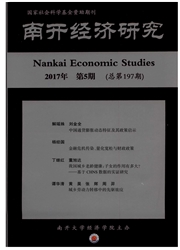

 中文摘要:
中文摘要:
本文利用1998-2010年我国30个省市区的70个大中城伟面板数据,采用空间动态面板数据方法,以柯布-道格拉斯生产函数为基础进行拓展,构建了包括房地产投资及其空间效应的空间动态计量模型,实证分析房地产投资的地区影响效果。本文发现,全样本70个大中城市房地产投资之间存在显著的空间效应,某一地区房地产投资不仅促进和提升本地区经济增长,同时也带动其他地区经济增长。从区域来看,房地产投资对东、中、西部的经济增长均有显著的促进作用,但是彼此之间存在差异,东部存在的外溢效应大于中、西部。从区际来看,东中、中西以及东西之间也存在一定的空间溢出效应;长三角、珠三角两大城市群内部同样存在房地产投资的空间溢出效应。本文在方法上拓展了以前仅在时间维度上做的计量回归分析,从空间维度研究房地产投资对经济增长的影响,并在此基础上给出了针对性政策建议。
 英文摘要:
英文摘要:
The present paper used the spatial dynamic panel data approach built with the panel data from 70 medium and large cities of 30 provinces and cities of China from 1998 to 2010, and structured a spatial dynamic econometric model including real estate investment and spatial effect. This model was expanded on account of Cobb-Douglas product function, and empirically analyzed the regional effects of real estate investment. The main findings show that there exist significant spatial effects among the real estate investments of 70 medium and large cities as a full sample and the real estate investment in one region not only promotes and enhances the economic growth of this region, but also drives the eco- nomic growth of other regions. Judging from the regional perspective, the real estate in- vestment has an obvious effect on the economic growth of the eastern, central and western parts of China, but there is a difference between each other and the spillover effect in the eastern part is greater than that in the central and western parts. Judging from interregional perspective, there also exist certain spillover effects between the eastern and central part, the central and western part, and the eastern and western part. There also exist spillover effects in the internal of Yangtze River Triangle and Pearl River Triangle. This paper expands the method based on the statistics and econometrics analysis from traditional time dimension, and analyses the effect of the real estate investment to economic growth from the space dimension. Therefore, this paper conducted a lot of related studies on these findings and raised some countermeasures on this basis.
 同期刊论文项目
同期刊论文项目
 同项目期刊论文
同项目期刊论文
 期刊信息
期刊信息
